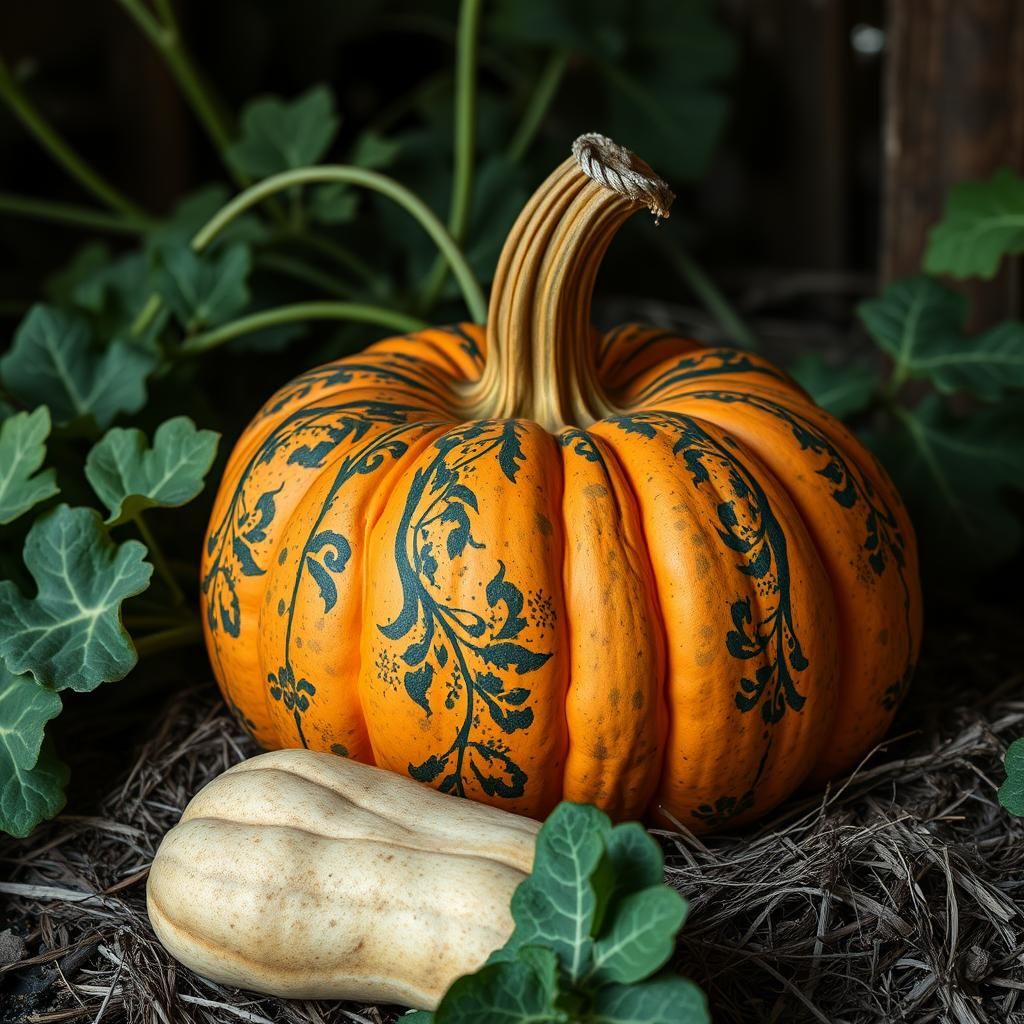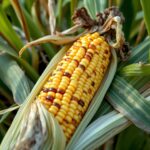Ultimate Guide: How Do You Grow a Giant Pumpkin for Record-Breaking Harvests

Giant pumpkins captivate both novice gardeners and seasoned growers alike. With their immense size and vibrant colors, these colossal gourds often steal the show at local fairs and competitions. However, growing a record-breaking giant pumpkin requires more than just luck and a sunny spot in the garden. In this ultimate guide, we will explore the essential techniques, tools, and tips that can transform your pumpkin-growing venture into a monumental success. From selecting the right seeds to mastering soil conditions and nurturing techniques, get ready to unlock the secrets of cultivating a giant pumpkin that could topple records and astonish onlookers.
Steps to Successfully Grow a Giant Pumpkin
Growing a giant pumpkin requires a blend of proper techniques, care, and a bit of luck. Start by selecting high-quality seeds from reputable sources, as genetics plays a crucial role in the size of the pumpkin. Plant the seeds in nutrient-rich soil, ensuring they receive ample sunlight and water. It’s essential to provide a suitable environment that includes adequate space for the pumpkin vine to grow, usually at least 20 feet. Regularly monitor for pests and diseases, and add fertilizers that are high in potassium and phosphorus to optimize growth. As the pumpkins develop, thin out fruits to focus the plant's energy on the largest one, and maintain consistent moisture levels to support optimal growth conditions.
Choosing the Right Seeds
When growing a giant pumpkin, selecting the right seeds is vital for achieving significant size. Look for seeds from past winners in giant pumpkin competitions, as these typically carry the best genetics for size. Many growers participate in seed exchanges within the community, which can help you acquire rare and robust strains. By opting for seeds with demonstrated growth potential, you increase your chances of raising a record-breaking pumpkin.
Preparing the Soil
The foundation for a giant pumpkin starts with well-prepared soil. Choose a location that receives full sun and has well-draining capabilities. Enrich the soil with plenty of organic material, such as compost or well-rotted manure, to ensure a fertile ground for the seeds. Conduct a soil test to check for essential nutrients and pH levels; amending the soil with appropriate fertilizers can significantly enhance growth. The soil should be tilled to a depth of at least 12 inches to allow for deep root penetration, which is essential for heavy fruits.
Caring for the Pumpkin Vine
Once the seeds are planted and germinated, the real work begins in caring for the pumpkin vine. Ensure that the plant receives plenty of water, aiming for consistent moisture during the growing season. Regularly check for pests like aphids or squash bugs, and remove any weeds that may compete for nutrients. Supporting the vine with slings or structures can prevent damage as the pumpkin grows heavier and larger. Monitoring the plant closely will help you catch any issues early and address them promptly.
See also:
Feeding and Fertilizing
Proper nutrition is essential for growing giant pumpkins. Use a balanced fertilizer designed specifically for fruiting plants, which is higher in potassium and phosphorus to promote larger fruit growth. As the plant matures, consider applying a fertilizer every two weeks to replenish nutrients, especially during the critical growth phases when the pumpkin is enlarging. Additionally, foliar feeding can be beneficial, giving the plant a direct nutrient boost at various growth stages.
Harvesting Tips
Knowing when and how to harvest your giant pumpkin is crucial for maintaining its quality. Aim to harvest your pumpkin before the first frost, as cold temperatures can lead to blemishes and spoilage. Gently cut the pumpkin from the vine, ensuring to leave a few inches of the stem attached for a better appearance. Handle the pumpkin carefully to avoid bruising, and transport it to a cool area where it can be displayed or prepared for competitions. Remember to properly document the weight and dimensions if you aim to enter contests, as this can be a fun way to celebrate your hard work.
| Factor | Importance |
|---|---|
| Seeds | Genetic potential for size |
| Soil Quality | Nutrient and drainage capability |
| Watering | Maintains optimal growth conditions |
| Fertilization | Supports heavy fruit development |
| Harvest Timing | Affects pumpkin quality and longevity |
Essential Tips for Watering and Nutrition
To successfully grow a giant pumpkin, proper watering and nutrition are critical elements that can significantly impact growth rates and overall size. Giant pumpkins require a large amount of moisture to sustain their rapid development, especially during key growth stages. Implementing a deep watering strategy, ideally with a drip irrigation system, ensures the soil remains consistently moist without oversaturation, which can lead to root rot. Additionally, using a balanced fertilizer that is high in nitrogen during the initial growth stages promotes lush, healthy foliage, while gradually shifting to a high-potassium fertilizer as the fruit begins to swell is essential for achieving maximum size and strength.
Choosing the Right Seeds
Selecting the right seeds is crucial for maximizing your chances of growing a giant pumpkin. It is advisable to purchase seeds from reputable suppliers who specialize in giant pumpkin genetics, as these seeds are often bred for size, disease resistance, and vigorous growth. Look for seeds that have a proven track record of producing large pumpkins in contests; often, these will feature weight records from previous growers, ensuring they come from serious breeding lines.
Optimal Soil Conditions
Giant pumpkins thrive best in loamy, nutrient-rich soil with excellent drainage. Conducting a soil test is beneficial to determine nutrient levels and pH, which should ideally be around 6.0 to 6.8. Amending the soil with organic matter, such as compost or aged manure, can significantly enhance its fertility and structure, promoting better root development and moisture retention. Ensuring that the soil has adequate microbial activity can also improve nutrient availability for your growing pumpkins.
See also:
Managing Plant Spacing
Proper plant spacing plays a vital role in the growth of giant pumpkins. Allow sufficient distance between each plant, generally a minimum of 10 to 15 feet, to prevent crowding, which can lead to increased competition for nutrients and sunlight. Adequate spacing also facilitates better air circulation, reducing the risk of disease and pest infestations, which are particularly detrimental to large pumpkins during their critical growth phases.
Implementing Pest and Disease Control
Consistent monitoring and effective control of pests and diseases are imperative for maintaining the health of giant pumpkins. Regular inspections for common nuisances such as aphids, squash bugs, and powdery mildew should be part of your routine. Employing integrated pest management (IPM) techniques, including the use of natural predators, microbial controls, and organic pesticides, can help mitigate damage while maintaining a healthy and thriving pumpkin plant.
Understanding Growth Stages
Being knowledgeable about the distinct growth stages of giant pumpkins can help growers provide tailored care at each stage. The initial germination phase requires warmth and moisture, while the seedling stage benefits from vigilant attention to watering and nutrient supply. As plants progress to the fruit set stage, a shift to additional nutrients that support large fruit development is paramount, alongside careful pruning of excess fruit to allow the plant's energy to focus on growing the selected pumpkin to record-breaking sizes.
Questions from Our Readers
How long does it take to grow a giant pumpkin?
Growing a giant pumpkin typically takes about 90 to 120 days from seedling to harvest. The exact time frame can vary based on the variety of pumpkin and the climate conditions in which it is grown.
What soil conditions are best for giant pumpkins?
Giant pumpkins thrive in well-drained, nutrient-rich soil with a pH level around 6.0 to 6.8. Incorporating organic matter and ensuring adequate moisture are key factors for optimal growth.
See also:
How much water do giant pumpkins need?
Giant pumpkins require a significant amount of water, ideally 1 to 2 inches per week, depending on the weather conditions. Consistent watering helps to promote healthy growth and prevents the pumpkins from becoming stressed.
Is fertilization necessary for growing giant pumpkins?
Yes, fertilization is crucial for growing giant pumpkins as they have high nutrient demands. A balanced fertilizer that includes nitrogen, phosphorus, and potassium, along with additional micronutrients, will support their growth throughout the season.

If you want to read more articles like Ultimate Guide: How Do You Grow a Giant Pumpkin for Record-Breaking Harvests, we recommend you check out our Seeds category.
Leave a Reply
Related Articles